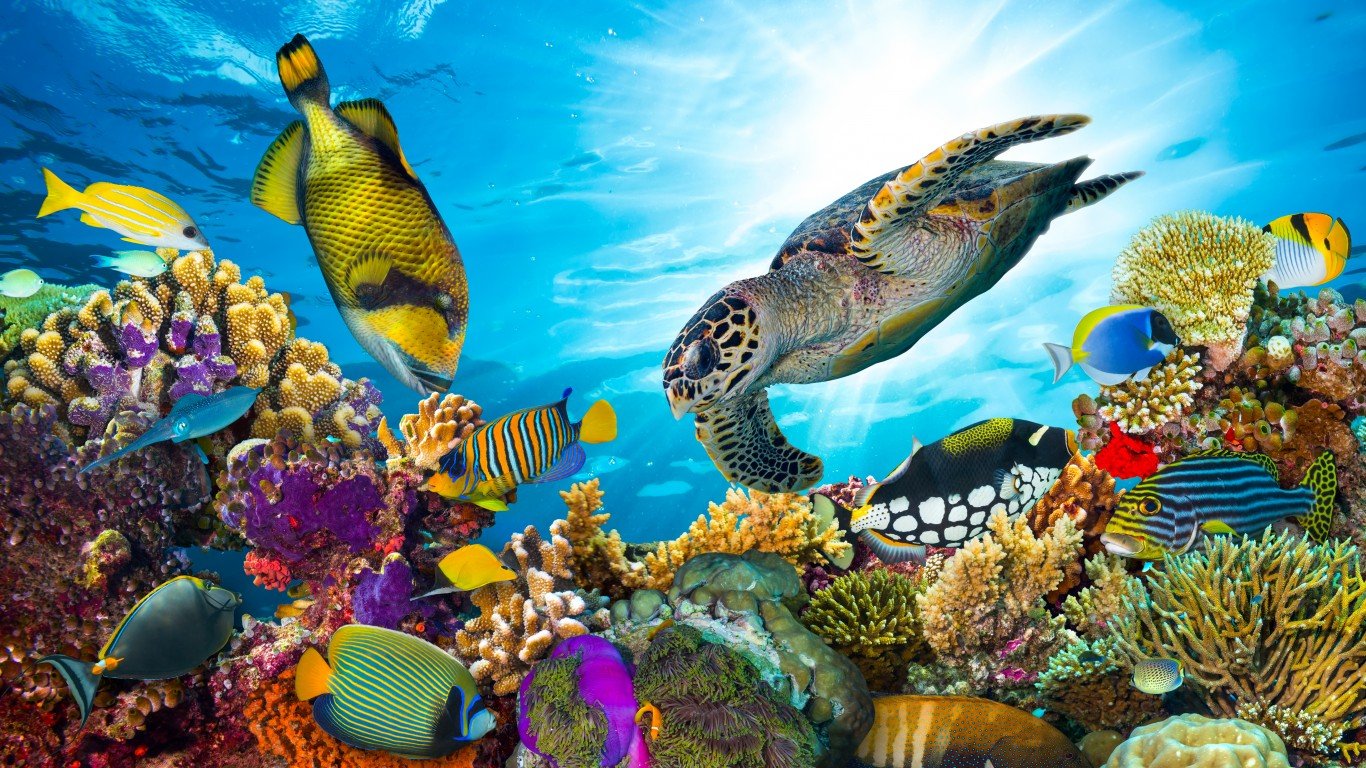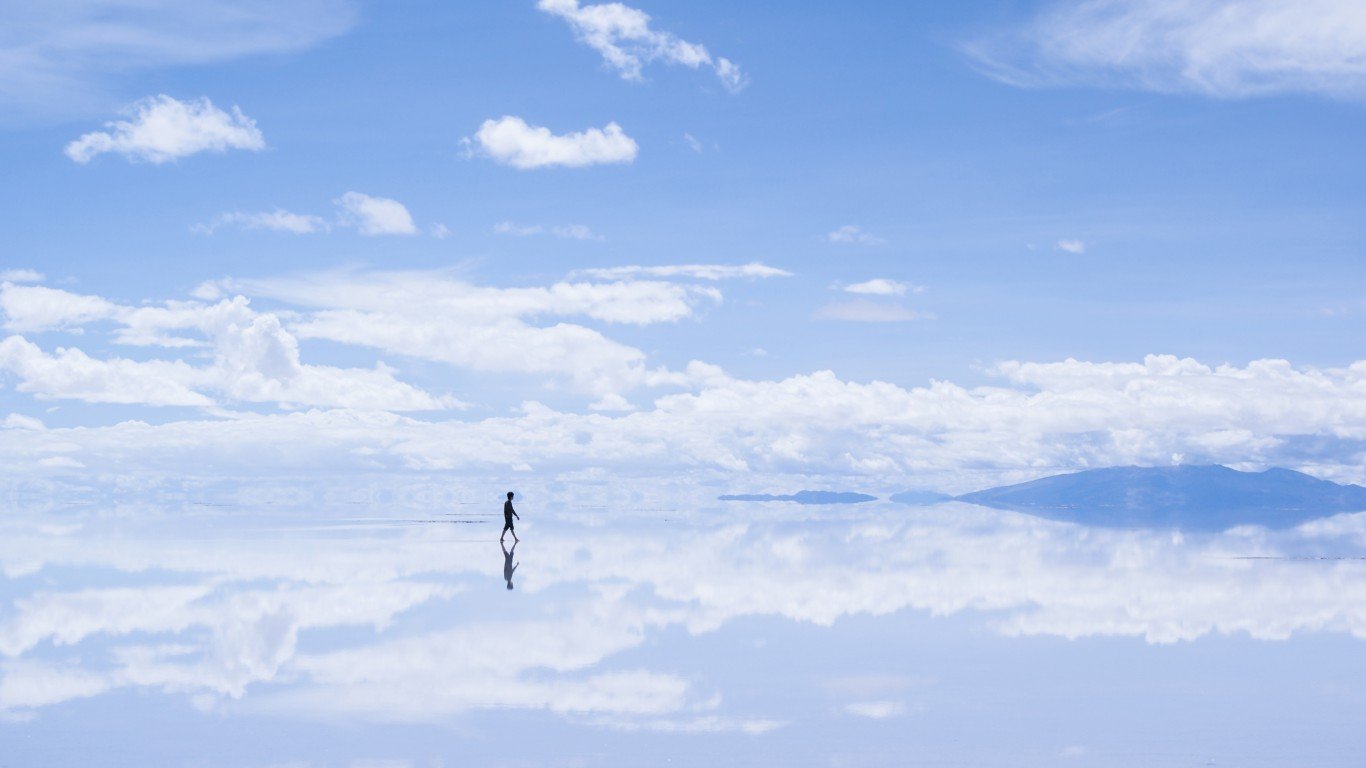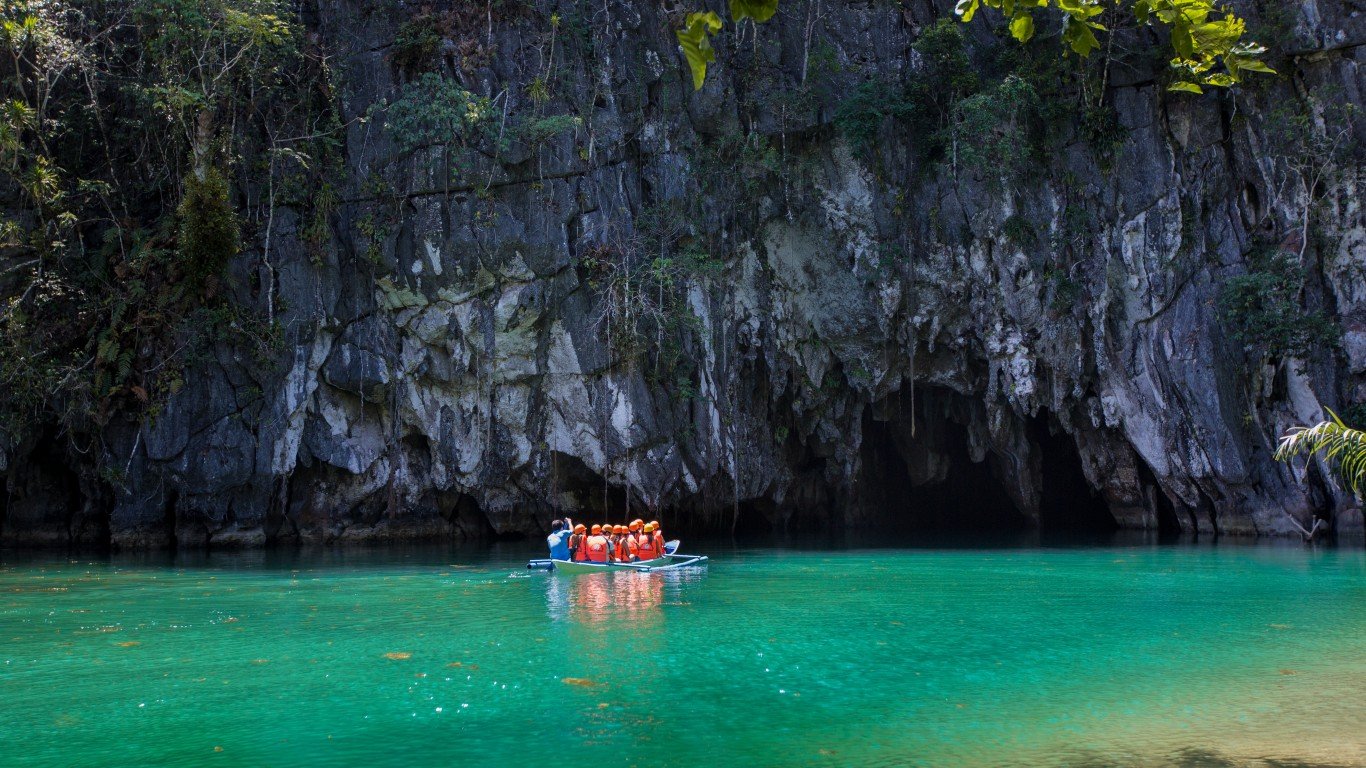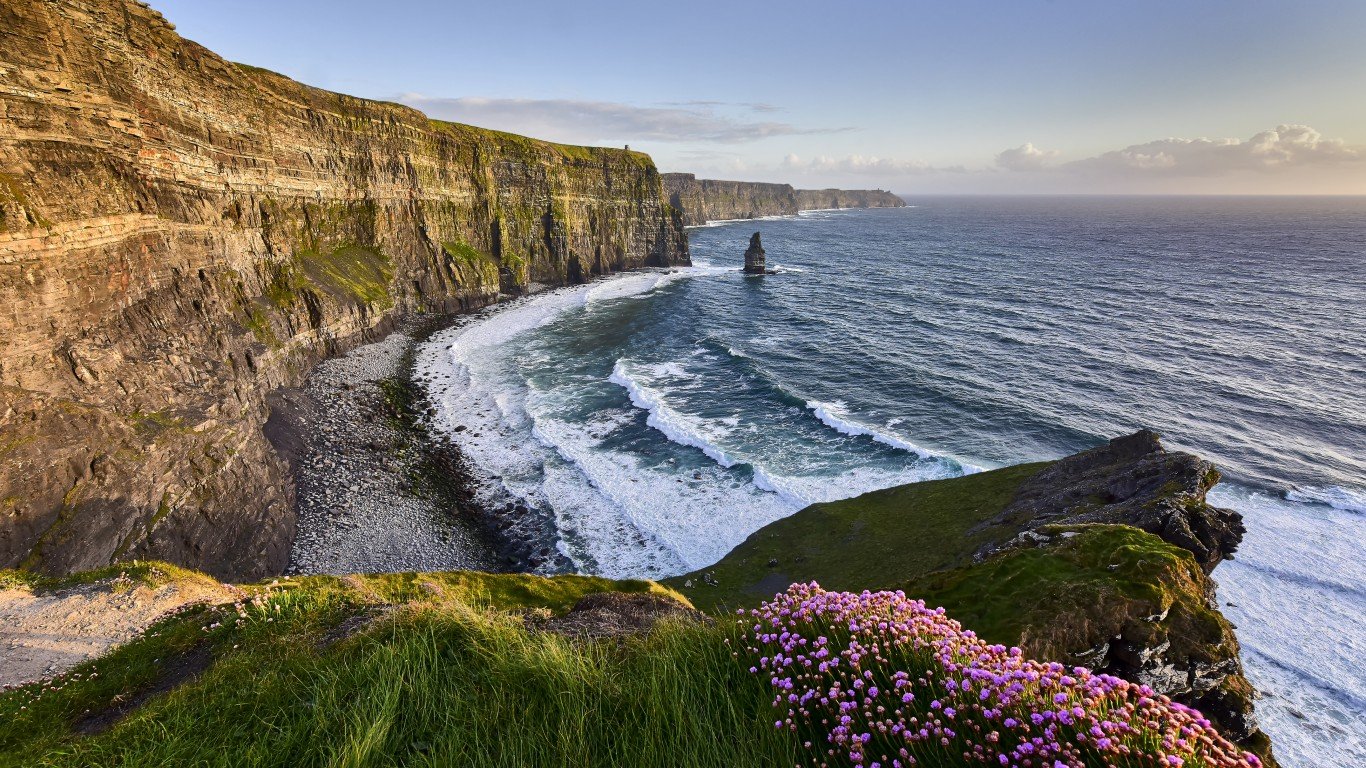
1. Great Barrier Reef
> Location: Australia
Off the north-east coast of Australia, the world’s largest coral reef ecosystem is home to over 4,000 species of mollusks, 1,500 species of fish, and a diverse array of anemones, sponges, crustaceans, sea turtles, and dolphins. Though most of the site is protected against development and over-fishing, the climate crisis continues to threaten this delicate ecosystem.

2. Salar de Uyuni
> Location: Bolivia
The world’s largest salt flat in southwest Bolivia, which spans over 4,000 miles, can be bitterly cold, as it’s 12,000 feet above sea level. The site is most famous for its mirror effect, when in the rainy season it is transformed into a shallow lake that perfectly reflects the sky all the way to the horizon.

3. Puerto Princesa Underground River
> Location: Philippines
This National Park on the island of Palawan contains a river that runs 5 miles underground through a series of limestone caves, connecting a lake to the ocean. The above-ground portion of the park features intact old-growth forest.

4. Wadden Sea
> Location: the Netherlands, Germany, Denmark
Spanning over 300 miles of coast from the Netherlands to Germany and Denmark, the Wadden Sea is the largest uninterrupted intertidal zone in the world. Delicate tidal ecosystems thrive along this coast, which is comprised of mud flats, sandbars, marshes, and dunes. It is a crucial site for many African-Eurasian migratory birds.

5. Cliffs of Moher
> Location: Ireland
Towering up to 700 feet over the ocean, the Cliffs of Moher run for five miles down the west coast of Ireland. Thousands of puffins nest on the limestone cliffs, which attract over a million visitors yearly.






